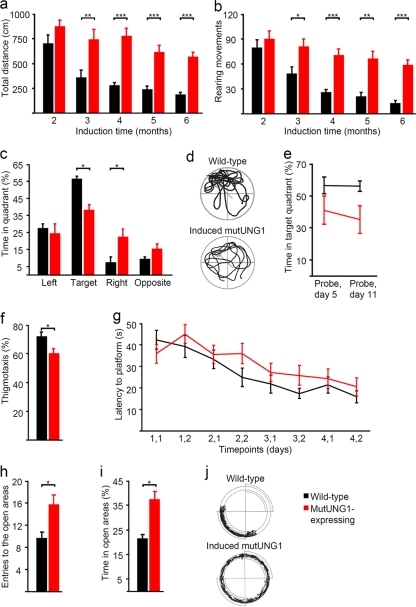FIG. 6.
Increased locomotor activity, but decreased cognitive ability and anxietylike behavior, in mutUNG1-expressing mice. (a) Mice expressing mutUNG1 show higher locomotor activity in the form of total distance traveled in open field tests compared to wild-type littermates. (b) MutUNG1-expressing mice show higher activity in the form of rearing movements in open field tests compared to wild-type littermates. (c) Percentage of time spent in each of the four quadrants of the water maze during probe trials. The mutUNG1 mice spend less time in the target quadrant than the wild-type littermates. The results from both probe trials have been pooled. (d) Representative swimming paths in the water maze during the probe trial on day 5. (e) Percentage of time spent in the target quadrant of the water maze for both probe trials. (f) Percentage of time in thigmotaxis (that is, the tendency of rodents to hug the wall) during the water maze test. (g) Latency to locate platform position during the learning phase of the water maze task. (h) Entries to the open areas of the elevated zero maze. Induced mutUNG1 mice show reduced anxiety responses by a higher entry frequency into the open areas. (i) Percentage of time in the open areas of the elevated zero maze. Induced mutUNG1 mice show reduced anxiety responses by spending more time in the open areas. (j) Representative paths of the head during the elevated zero maze task. Closed quadrants are marked with double lines.

